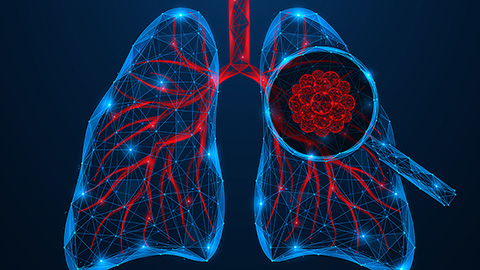Protein modifications drive lung cancer resistance
Key protein modifications such as glycosylation and phosphorylation regulate a variety of cellular processes, such as cell-cell recognition, immune response and cell growth. Dysregulation of these tags is linked to human diseases, making them important to study disease progression and identify biomarkers and druggable targets using mass spectrometry. However, since these modifications are often low-abundance and dynamically modified, they need to be enriched first. Despite the progress in the development of individual enrichment strategies, scientists have yet to develop a highly sensitive and robust platform to focus on multiple modifications simultaneously.

Yu-Ju Chen’s team from Taiwan published an article in the Molecular & Cellular Proteomics introducing a streamlined enrichment strategy called Fe-ZIC-cHILIC, which captures both glycopeptides, or GPs, and phosphopeptides, or PPs, in a single step. This method uses a tandem tip that is packed with a special material combining iron ions with ZIC-cHILIC resin. In this setup, the sample flows through this tandem tip, minimizing protein loss and enriching GPs in the top tip while PPs are in the bottom tip. Using this strategy, they analyzed nonsmall cell lung cancer cells, or NSCLC cells with mutations in the EGFR gene, which is the first-line targeted therapy yet eventually drives drug resistance and leads to tumor recurrence. Within a single cell type, they identified 10,536 GPs and 11,329 PPs and found significant changes on the site-specific glycopeptides and phosphoptpides between drug-sensitive and drug-resistant cells. Notably, they observed changes in EGFR, ERBB2, MET and integrin family proteins, which are primary targets for cancer treatments.
This study highlights both the novelty of Fe-ZIC-cHILIC material in dual enrichment with high specificity to study protein modifications. Further investigations will assess the strategy in different sample types to determine how these modifications drive resistance and how therapies could be developed to improve outcomes.
Enjoy reading ASBMB Today?
Become a member to receive the print edition four times a year and the digital edition monthly.
Learn moreGet the latest from ASBMB Today
Enter your email address, and we’ll send you a weekly email with recent articles, interviews and more.
Latest in Science
Science highlights or most popular articles

Building the blueprint to block HIV
Wesley Sundquist will present his work on the HIV capsid and revolutionary drug, Lenacapavir, at the ASBMB Annual Meeting, March 7–10, in Maryland.

Gut microbes hijack cancer pathway in high-fat diets
Researchers at the Feinstein Institutes for Medical Research found that a high-fat diet increases ammonia-producing bacteria in the gut microbiome of mice, which in turn disrupts TGF-β signaling and promotes colorectal cancer.

Mapping fentanyl’s cellular footprint
Using a new imaging method, researchers at State University of New York at Buffalo traced fentanyl’s effects inside brain immune cells, revealing how the drug alters lipid droplets, pointing to new paths for addiction diagnostics.

Designing life’s building blocks with AI
Tanja Kortemme, a professor at the University of California, San Francisco, will discuss her research using computational biology to engineer proteins at the 2026 ASBMB Annual Meeting.

Cholesterol as a novel biomarker for Fragile X syndrome
Researchers in Quebec identified lower levels of a brain cholesterol metabolite, 24-hydroxycholesterol, in patients with fragile X syndrome, a finding that could provide a simple blood-based biomarker for understanding and managing the condition.

How lipid metabolism shapes sperm development
Researchers at Hokkaido University identify the enzyme behind a key lipid in sperm development. The findings reveal how seminolipids shape sperm formation and may inform future diagnostics and treatments for male infertility.

